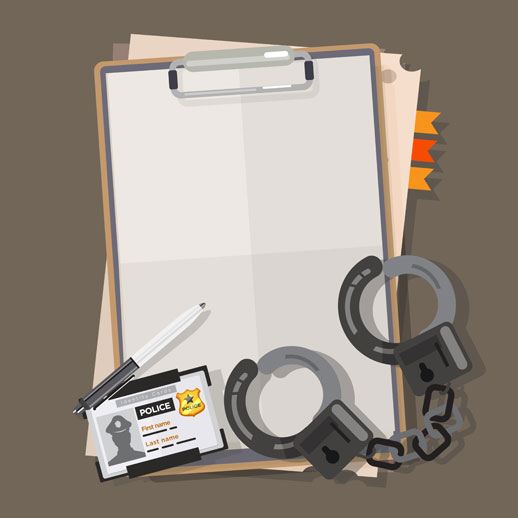
Arrest reports vary in detail and length from agency to agency. As a reviewer, you should focus your attention on the narrative since this represents the "meat and potatoes" of any arrest report.
Here's how a typical arrest report will break down into narrative sections:
Charges: This section will tell you what the client was charged with, including the specific code section and enabling code book, e.g., the Penal Code, the Vehicle Code, the Health and Safety Code, etc.
Origin/probable cause: This section gives you two important sets of facts: how the officer came to notice the arrestee (radio call, routine observations, a tip) and what led the officer to stop and detain the person (weaving while driving, bizarre behavior, running from a ringing alarm while carrying a VCR). This is the most delicate part of the report because much of the rest of the case (searches, arrest, etc.) hinges on good and legal probable cause. Read very carefully here, highlighting with a pen the areas that may be inconsistent with case law.
Officer actions: This section explains what actions the officer took to apprehend the person and why he or she took those actions. It includes things the officer may have seen or heard that led him or her to make an arrest.
Victim/Witness statements: These are descriptive statements based on comments the officer has solicited from crime victims and nearby witnesses. These statements are typically written in a looser, paraphrased style: "The witness told me in essence that he was sitting on the bus bench when he saw the suspect run up and knock the victim to the ground. ..."
Suspect statements: These are almost always verbatim, quoted statements made by the arrestee, either after the Miranda admonition or spontaneously before Miranda warnings. Officers will usually document these statements as quoted passages (Officer: "Then what did you do?" Suspect: "I put the gun in my jacket pocket. . . ."). Remember, police officers have been taught to interview victims and wit nesses and to interrogate suspects. The report should reflect a professional approach to taking statements.
Evidence: This section consists of an inventory of any evidence recovered at the scene or taken from the suspect and the information as to the disposition of the evidence: "One small plastic baggie of marijuana, removed from the suspect's right front pants pocket. Impounded at the station on Tag #1234."
Injuries/damage: This section includes any description of injuries that the victim or suspect may have sustained or any damage to property caused by the crime.
With any criminal defense matter, keep the client's own statement of the facts in mind. What did he or she tell you or the attorney handling the case at the initial meeting? How does this compare with the officer's version? What discrepancies do you see in either story? Are there any obvious mistakes in the report in terms of case law, illegal detention, or unlawful search and seizure?
Rock-solid arrest reports are hard to beat. Good officers know from training and long years of experience just what to put in the report to "sell" the report to their supervisors and to the prosecuting city and district attorneys who will read it later. But even the best officers will take shortcuts, leave out pertinent information, or fail to explain their actions sufficiently to get a conviction. In a traffic collision or criminal defense case, the police report, the information you get from the client, and witness statements may be all you have to go on. If it's possible to win the case, you'll find the ammunition you need to help you right there in the report.





